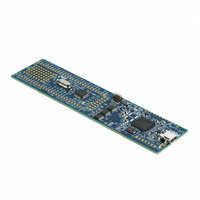OM11048 NXP Semiconductors, OM11048 Datasheet - Page 16

OM11048
Manufacturer Part Number
OM11048
Description
BOARD LPCXPRESSO LPC1343
Manufacturer
NXP Semiconductors
Series
LPCXpressor
Type
MCUr
Datasheet
1.OM11048.pdf
(62 pages)
Specifications of OM11048
Contents
Board, Software
Processor To Be Evaluated
LPC1343
Processor Series
LPC13xx
Interface Type
USB, I2C, UART
Maximum Operating Temperature
+ 85 C
Minimum Operating Temperature
- 40 C
Operating Supply Voltage
3.3 V
Tool Type
Demonstration Board
Core Architecture
ARM
Cpu Core
ARM Cortex M3
Data Bus Width
32 bit
Lead Free Status / RoHS Status
Lead free / RoHS Compliant
For Use With/related Products
LPC1343
Lead Free Status / Rohs Status
Lead free / RoHS Compliant
Other names
568-4947
Available stocks
Company
Part Number
Manufacturer
Quantity
Price
Part Number:
OM11048
Manufacturer:
NXP/恩智浦
Quantity:
20 000
Company:
Part Number:
OM11048Ј¬598
Manufacturer:
PH3
Quantity:
48
NXP Semiconductors
7. Functional description
LPC1311_13_42_43
Product data sheet
7.1 Architectural overview
7.2 ARM Cortex-M3 processor
7.3 On-chip flash program memory
7.4 On-chip SRAM
7.5 Memory map
The ARM Cortex-M3 includes three AHB-Lite buses: the system bus, the I-code bus, and
the D-code bus (see
system bus and are used similarly to TCM interfaces: one bus dedicated for instruction
fetch (I-code) and one bus for data access (D-code). The use of two core buses allows for
simultaneous operations if concurrent operations target different devices.
The ARM Cortex-M3 is a general purpose, 32-bit microprocessor, which offers high
performance and very low power consumption. The ARM Cortex-M3 offers many new
features, including a Thumb-2 instruction set, low interrupt latency, hardware divide,
interruptible/continuable multiple load and store instructions, automatic state save and
restore for interrupts, tightly integrated interrupt controller, and multiple core buses
capable of simultaneous accesses.
Pipeline techniques are employed so that all parts of the processing and memory systems
can operate continuously. Typically, while one instruction is being executed, its successor
is being decoded, and a third instruction is being fetched from memory.
The ARM Cortex-M3 processor is described in detail in the Cortex-M3 Technical
Reference Manual which is available on the official ARM website.
The LPC1311/13/42/43 contain 32 kB (LPC1313 and LPC1343), 16 kB (LPC1342), or
8 kB (LPC1311) of on-chip flash memory.
The LPC1311/13/42/43 contain a total of 8 kB (LPC1343 and LPC1313) or 4 kB (LPC1342
and LPC1311) on-chip static RAM memory.
The LPC134x incorporates several distinct memory regions, shown in the following
figures.
program viewpoint following reset. The interrupt vector area supports address remapping.
The AHB peripheral area is 2 MB in size and is divided to allow for up to 128 peripherals.
The APB peripheral area is 512 kB in size and is divided to allow for up to 32 peripherals.
Each peripheral of either type is allocated 16 kB of space. This allows simplifying the
address decoding for each peripheral.
Figure 6
All information provided in this document is subject to legal disclaimers.
shows the overall map of the entire address space from the user
Figure
Rev. 3 — 10 August 2010
1). The I-code and D-code core buses are faster than the
32-bit ARM Cortex-M3 microcontroller
LPC1311/13/42/43
© NXP B.V. 2010. All rights reserved.
16 of 62
















